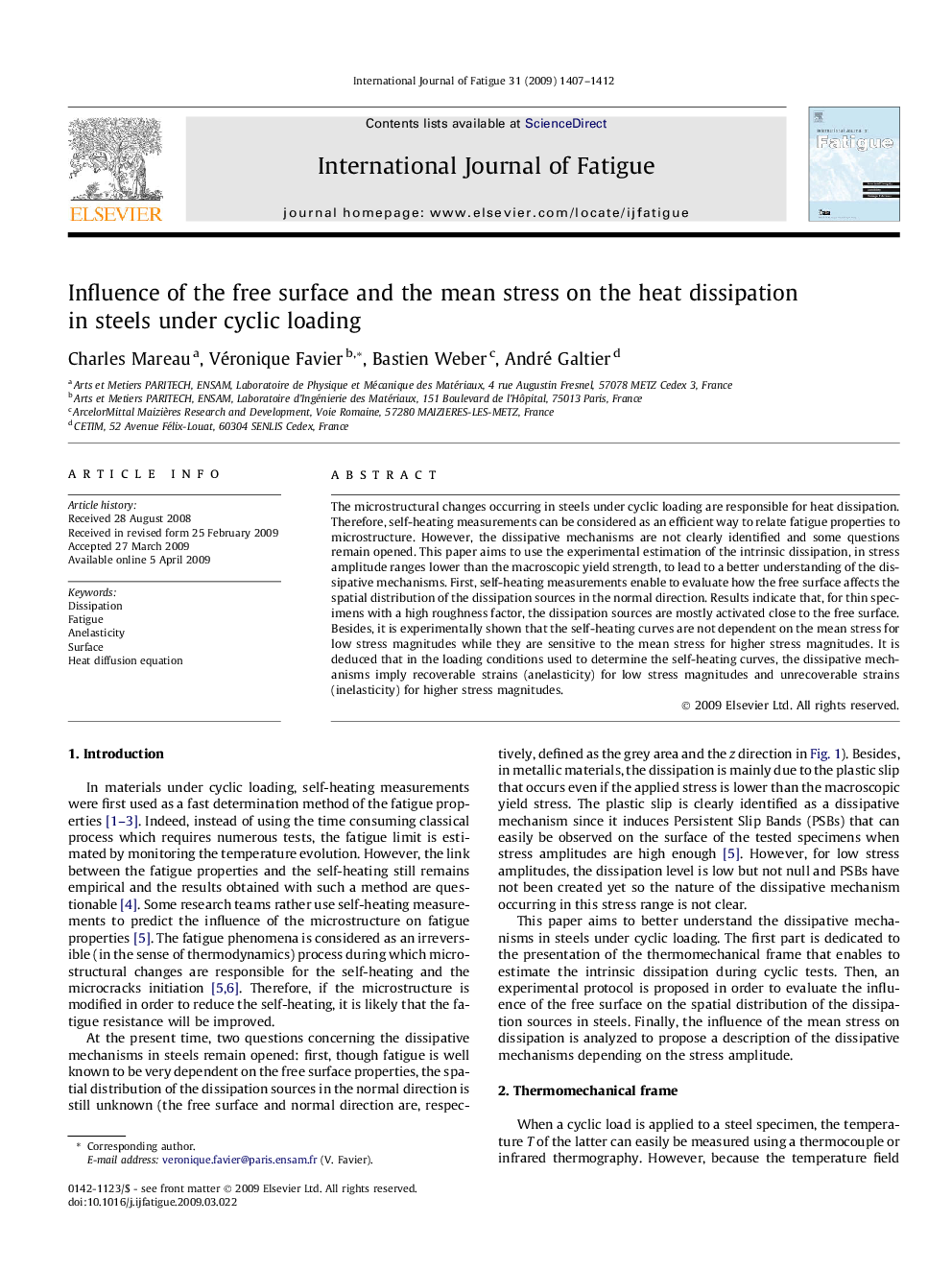| Article ID | Journal | Published Year | Pages | File Type |
|---|---|---|---|---|
| 781546 | International Journal of Fatigue | 2009 | 6 Pages |
The microstructural changes occurring in steels under cyclic loading are responsible for heat dissipation. Therefore, self-heating measurements can be considered as an efficient way to relate fatigue properties to microstructure. However, the dissipative mechanisms are not clearly identified and some questions remain opened. This paper aims to use the experimental estimation of the intrinsic dissipation, in stress amplitude ranges lower than the macroscopic yield strength, to lead to a better understanding of the dissipative mechanisms. First, self-heating measurements enable to evaluate how the free surface affects the spatial distribution of the dissipation sources in the normal direction. Results indicate that, for thin specimens with a high roughness factor, the dissipation sources are mostly activated close to the free surface. Besides, it is experimentally shown that the self-heating curves are not dependent on the mean stress for low stress magnitudes while they are sensitive to the mean stress for higher stress magnitudes. It is deduced that in the loading conditions used to determine the self-heating curves, the dissipative mechanisms imply recoverable strains (anelasticity) for low stress magnitudes and unrecoverable strains (inelasticity) for higher stress magnitudes.
